- Home
- Fiberglass Rebar
GangLong Custom A New Standard in Fiberglass Rebar
Fiberglass Rebar is a Spiral Wrapped Structural Reinforcing Rod made from a combination of fiberglass roving and resin. Fiberglass Rebar is revolutionizing concrete reinforcement by offering a modern alternative to traditional steel. This material, made from fiberglass-reinforced polymers, provides architects and engineers with versatile options for creating both futuristic and traditional designs. It can be painted, faced with aggregates, colored, or left with a natural finish.
Unlike steel rebar, Fiberglass Rebar is lightweight, non-corrosive, and non-conductive. It addresses the limitations of steel, such as rust and heavy weight, providing a stronger and more durable reinforcement. For example, properly reinforced FRP concrete slabs exposed to heavy traffic, like bridge decks and driveways, can last approximately 20 times longer than those reinforced with steel.
Fiberglass Rebar’s benefits include ease of handling, reduced maintenance, and long-term cost-effectiveness. It is rapidly gaining popularity due to its durability and suitability for harsh environments.
Simplifying Your Life: Key Functionalities

| Attribute | Details |
|---|---|
| Product Name | Fiberglass Rebar (FRP Rebar, GFRP Rebar) |
| Materials Used | Fiberglass Reinforced Polymer (GFRP), Composite Materials, Basalt Fiber |
| Technique | Pultrusion, Moulding |
| Brand | GangLong Fiberglass |
| Place of Origin | Hebei, China |
| Application | - Construction (concrete reinforcement, structural applications) |
| - Suitable for use in environments subject to corrosion, such as seawater | |
| Diameter Options | 3mm to 40mm (customizable) |
| Surface Treatment | - Full thread, sandblasted, screw thread |
| Tensile Strength | 509MPa to 1900MPa |
| Density | 2.1 to 2.2 g/cm³ |
| Color Options | Customizable (varies by manufacturer) |
| Shape Options | Customizable shapes (e.g., round, ribbed, deformed) |
| Features | - More strength than traditional steel rebar |
| - Water-resistant, never rusts | |
| - Corrosion-resistant to seawater | |
| - Long lifecycle of 100+ years | |
| - High tensile strength and flexibility | |
| - Lightweight yet durable | |
| - Highly suitable for infrastructure projects in harsh environments | |
| Certificates | ISO9001, CE, MTC |
| Processing Services | - Bending, Decoiling, Moulding, Welding, Punching, Cutting |
| Technology | Pultrusion Process |
| Standard Compliance | - Meets international standards (ASTM A615, EN10080, ISO standards) |
| OEM Acceptance | OEM options available (custom orders for specific project requirements) |
| Delivery Time | - 7 to 15 days depending on the size and customization of the order |
News
- Exploring the Benefits of Carbon Fiber Apparel
- How to Work with Carbon Fiber Successfully
- Carbon Fiber Suit: The Future of Lightweight Armor
- Is Carbon Fiber Armor the Future of Protection?
- Why White Carbon Fiber is Popular in Automotive Design
- Transparent Carbon Fiber Sheets: Strength Meets Clarity in Design
- Chopped Carbon Fiber Mat for Lightweight Reinforcement
- Carbon Fiber EG Hatch: Upgrade Your Civic Today
- The Benefits of Using Structural Carbon Fibre in Engineering
- How Many Layers of Layered Carbon Fiber Are Needed?
Superior Benefit of Fiberglass Rebar
Fiberglass rebar, also known as GFRP (Glass Fiber Reinforced Polymer) rebar, is an advanced reinforcement material used in concrete structures as a substitute for traditional steel rebar. It is composed of continuous glass fibers embedded in a polymer resin matrix, offering several superior benefits compared to steel rebar. Here’s a detailed description of its key advantages:
Corrosion Resistance
- Superior to Steel: Unlike steel rebar, which is susceptible to corrosion when exposed to moisture, salts, and other environmental factors, fiberglass rebar is highly resistant to corrosion. This makes it ideal for use in harsh environments such as marine structures, bridges, and roads in areas where de-icing salts are commonly used.
- Longer Lifespan: The resistance to corrosion significantly extends the lifespan of concrete structures, reducing the need for costly repairs and maintenance.
Lightweight
- Ease of Handling and Installation: Fiberglass rebar is significantly lighter than steel rebar, which makes it easier to transport, handle, and install. This reduces labor costs and accelerates construction timelines.
- Reduced Structural Weight: The lower weight of fiberglass rebar can lead to reduced overall weight in concrete structures, which can be beneficial for certain designs, such as in seismic zones where weight reduction can help mitigate structural stress.
High Strength-to-Weight Ratio
- Comparable or Greater Strength: Fiberglass rebar has a higher strength-to-weight ratio than steel, meaning it can provide comparable or even superior strength while being much lighter. This can allow for more efficient designs and fewer materials, saving both money and space in construction.
- Improved Load-Bearing Capacity: The fiberglass rebar can bear significant loads despite its lightness, which is especially valuable for reinforced concrete structures.
Non-Conductive
- Electrical Insulation: Fiberglass rebar is non-conductive, which means it does not conduct electricity. This property makes it suitable for use in electrical and communication infrastructure, where electrical conductivity is a concern, such as in underground cables or other specialized projects.
- Safety: In areas where grounding or electrical conductivity could be hazardous, fiberglass rebar offers an added safety feature.
Durability in Extreme Conditions
- Resistance to Chemical Exposure: Fiberglass rebar is resistant to a wide range of chemicals, including alkalis, acids, and solvents, making it ideal for use in chemical plants, wastewater treatment facilities, and other environments where concrete might be exposed to corrosive substances.
- High Temperature Resistance: While not as heat-resistant as steel, fiberglass rebar can still tolerate higher temperatures than traditional steel rebar without significant degradation in its properties.
Reduced Thermal Expansion
- Improved Structural Integrity: Fiberglass rebar has a lower coefficient of thermal expansion compared to steel, meaning it expands and contracts less with temperature fluctuations. This helps maintain the structural integrity of concrete over time, especially in environments with extreme temperature variations.
Environmental Benefits
- Sustainability: The manufacturing process of fiberglass rebar generally has a lower environmental impact compared to steel production, which involves energy-intensive processes. Furthermore, fiberglass rebar is non-toxic and can be recycled, contributing to more sustainable construction practices.
- No Risk of Rust Staining: Because fiberglass rebar does not rust like steel, there is no risk of rust stains or degradation of the concrete surface, which can improve the aesthetic appearance and longevity of structures.
Cost Considerations
- Lower Maintenance Costs: The durability and corrosion resistance of fiberglass rebar reduce the need for long-term maintenance and repairs, potentially leading to lower overall lifecycle costs.
- Initial Costs vs Long-Term Savings: While fiberglass rebar might have a higher initial material cost than steel, the reduction in repair and maintenance costs over time, as well as the longer lifespan of the structure, can make it a cost-effective choice in the long run.
Flexibility in Design
- Customizability: Fiberglass rebar can be tailored to specific design requirements, offering more flexibility in engineering applications. It is available in different grades and sizes, which can be adapted to meet specific load-bearing or environmental needs.
Aesthetic Considerations
- Better Surface Finish: Since fiberglass rebar doesn’t corrode, there is less risk of the concrete surface being damaged by rust, which can leave unsightly stains. This helps maintain a cleaner, more durable surface appearance for exposed concrete applications.
Fiberglass rebar offers numerous superior benefits, particularly in terms of corrosion resistance, weight reduction, strength, and environmental advantages. While it may not yet be as widely adopted as traditional steel rebar, its unique properties make it a compelling choice for specialized applications where durability, longevity, and cost-effectiveness are critical. With the growing demand for sustainable and resilient construction materials, fiberglass rebar is increasingly being recognized as a valuable alternative to steel reinforcement in a wide range of concrete applications.
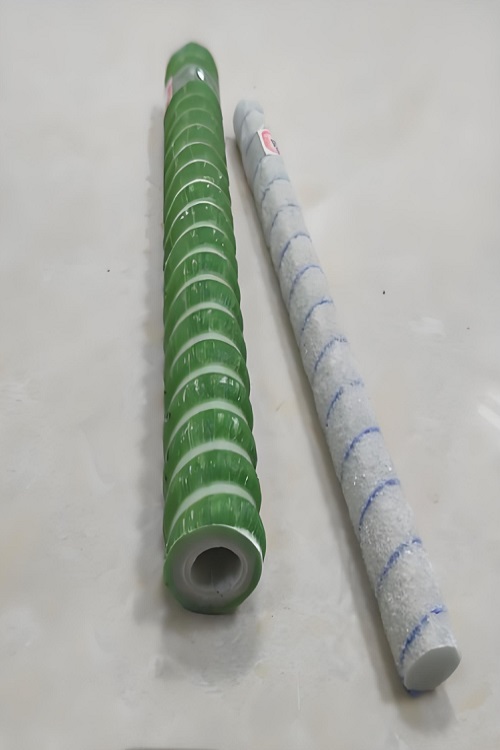

Fiberglass Rebar Reinforcement Standard
Key Standards for Fiberglass Rebar Reinforcement
ASTM D7957 – Standard Specification for Glass Fiber-Reinforced Polymer (GFRP) Bars for Concrete Reinforcement
This is the primary standard in the U.S. for GFRP reinforcement bars, providing specifications for the materials used in fiberglass rebar, including the type of glass fiber, resin matrix, and mechanical properties such as tensile strength, modulus of elasticity, and elongation.
Key properties covered:
- Tensile strength and modulus of elasticity
- Durability characteristics (corrosion resistance, chemical resistance)
- Impact and fatigue resistance
- Dimensional tolerances (e.g., bar diameter and length)
- Surface characteristics (roughness for bonding with concrete)
ASTM D7958 – Standard Guide for the Use of Glass Fiber-Reinforced Polymer Bars in Concrete
This guide provides recommendations for the design, manufacture, and installation of GFRP bars in concrete structures.
It covers topics such as handling, storage, and installation, as well as safety considerations when using fiberglass rebar.
The guide also includes recommendations for the calculation of structural loads, especially for tension, and provides practical guidance on the application of GFRP rebar in various conditions.
ACI 440.4R – Guide for the Design and Construction of Structural Concrete Reinforced with Glass Fiber-Reinforced Polymer (GFRP) Bars
Published by the American Concrete Institute (ACI), this guide provides in-depth recommendations for the design of concrete structures using fiberglass rebar.
Key aspects:
- Design criteria for structural elements (e.g., beams, slabs, columns) using GFRP bars.
- Considerations for the bond between GFRP bars and concrete.
- Structural analysis methods (e.g., flexural, shear, and torsional design).
- Durability and long-term performance, including the effects of environmental conditions such as moisture and temperature.
CSA S806 – Design and Construction of Building Structures with Fibre-Reinforced Polymers
This Canadian standard provides guidelines for the design of structures using fiber-reinforced polymer (FRP) materials, including fiberglass rebar.
It addresses the properties of FRP materials, including glass fiber, as well as the design procedures for FRP-reinforced concrete structures.
The standard includes recommendations for the design of various types of concrete members such as beams, slabs, and walls, and takes into account serviceability and safety issues.
ISO 1920-5 – Testing of Concrete – Part 5: Reinforcing Steel
While not specifically focused on fiberglass rebar, this ISO standard provides testing methods for the physical properties of reinforcing steel, including rebar used in concrete. Fiberglass rebar manufacturers and engineers often use similar testing principles for assessing the performance and quality of GFRP bars.
EU Standards (EN 13706 – Fiber Reinforced Polymer Reinforcement for Concrete)
In Europe, EN 13706 provides the specifications and testing methods for fiber-reinforced polymer (FRP) reinforcement materials, including fiberglass rebar.
This standard focuses on the durability, mechanical properties, and performance requirements of FRP reinforcement for concrete applications.
Key Mechanical and Durability Requirements in Standards
Tensile Strength: Fiberglass rebar must meet specific tensile strength requirements to ensure it can withstand the stresses placed on it in concrete structures. The minimum tensile strength is usually around 1,000 MPa (megapascals), though it can vary depending on the grade of rebar.
Modulus of Elasticity: The modulus of elasticity of fiberglass rebar is generally lower than that of steel (typically around 40-50 GPa), which affects how it behaves under load. The design of concrete structures must take this into account, as lower modulus can lead to more deflection.
Corrosion Resistance: One of the primary advantages of fiberglass rebar is its corrosion resistance. The standards ensure that the material can withstand exposure to various environmental factors, including moisture, salts, and acids, without significant degradation.
Shear Strength: The shear strength of fiberglass rebar is another key consideration, especially for applications in beams, slabs, and other structural elements. Testing standards specify the shear capacities that GFRP bars should achieve under load.
Bond Strength: The bond between fiberglass rebar and the surrounding concrete is critical for ensuring proper performance. Standards include tests for bond strength, which evaluates the rebar’s ability to transfer stresses to the concrete.
Fatigue Resistance: The ability of fiberglass rebar to withstand repeated loading (fatigue resistance) is important for long-term durability in structures subjected to cyclic loading, such as bridges and pavements.
Dimensional Tolerances: The standards specify the allowable tolerances for dimensions such as bar diameter, length, and surface texture to ensure uniformity and compatibility with concrete construction practices.
Design Considerations and Limitations
- Temperature Sensitivity: While fiberglass rebar is resistant to corrosion, its mechanical properties, particularly tensile strength and modulus, may degrade at very high temperatures. This is an important consideration for high-temperature environments such as industrial applications.
- Reduced Bond Strength: Because fiberglass rebar has a smoother surface compared to steel, the bond strength between the rebar and concrete may be lower. To compensate for this, special surface treatments, such as sand coating or ribbing, are often used to improve the bond.
- Creep and Shrinkage: The material’s resistance to creep (deformation over time under sustained load) and shrinkage must be carefully evaluated, particularly for large structures or applications where long-term performance is critical.
Fiberglass rebar standards ensure that this innovative material performs as expected in concrete reinforcement applications. They set guidelines for material properties, testing, and design to ensure the safety, reliability, and durability of concrete structures. Engineers must follow these standards to properly design and use GFRP rebar, taking into account its unique properties and potential limitations compared to traditional steel reinforcement.
Fiberglass Rebar Mechanical Properties
Fiberglass rebar, or Glass Fiber Reinforced Polymer (GFRP) rebar, offers a unique set of mechanical properties that differentiate it from traditional steel rebar. These properties are critical in determining how fiberglass rebar behaves under various loading conditions in reinforced concrete structures. Below is a detailed breakdown of the key mechanical properties of fiberglass rebar:
Tensile Strength
- Tensile strength is the maximum stress that a material can withstand while being stretched or pulled before breaking.
- Fiberglass Rebar: The tensile strength of GFRP rebar is typically much higher than that of concrete but lower than steel. It generally ranges from 1,000 MPa to 2,500 MPa depending on the grade of the rebar and its manufacturing process.
- Significance: This high tensile strength allows fiberglass rebar to resist breaking or failure under tension, making it an effective reinforcement for concrete subjected to stretching forces.
Modulus of Elasticity
- Modulus of elasticity (also called Young’s modulus) measures a material’s resistance to deformation under stress. It indicates how much a material will stretch or compress under a given load.
- Fiberglass Rebar: The modulus of elasticity of fiberglass rebar is lower than that of steel. It typically ranges from 40 GPa to 50 GPa (gigapascals).
- Comparison to Steel: Steel has a modulus of elasticity around 200 GPa, so fiberglass rebar is less stiff and will experience more deflection under the same loading conditions than steel. This must be considered in design, as it may lead to larger structural deflections.
Shear Strength
- Shear strength refers to the material’s ability to resist forces that can cause the material to slide or shear along a plane.
- Fiberglass Rebar: The shear strength of fiberglass rebar is generally lower than that of steel rebar. Typical values are in the range of 50 MPa to 100 MPa.
- Significance: Shear strength is important for applications like beams and slabs where transverse (shear) forces are present. The lower shear strength of fiberglass rebar means it is often used in combination with other reinforcement strategies in structures exposed to high shear forces.
Bond Strength
- Bond strength is a measure of how effectively the rebar transfers loads to the surrounding concrete, which is critical for the performance of reinforced concrete structures.
- Fiberglass Rebar: Fiberglass rebar tends to have a lower bond strength to concrete compared to steel, primarily due to its smoother surface. The bond strength typically ranges from 1.5 MPa to 5 MPa.
- Surface Treatment: To enhance bond strength, fiberglass rebar often features surface treatments such as sand coating or ribbing. These treatments help improve mechanical interlocking between the rebar and the surrounding concrete.
Fatigue Resistance
- Fatigue resistance refers to a material’s ability to withstand repeated or fluctuating stresses without failing over time.
- Fiberglass Rebar: GFRP bars have excellent fatigue resistance compared to steel. Due to their resistance to corrosion, fiberglass rebar maintains its mechanical properties even after many loading cycles. However, the fatigue resistance can depend on the specific resin system and the reinforcement configuration (fiber orientation and density).
- Significance: Fatigue resistance is crucial for concrete structures subjected to repeated loading, such as bridges, pavements, and other transportation infrastructure.
Creep Resistance
- Creep is the gradual deformation of a material under a constant load over time.
- Fiberglass Rebar: Fiberglass rebar exhibits low creep behavior, especially when compared to other materials like concrete or steel. However, long-term creep under sustained loading is still a consideration and can lead to some deformation, especially in high-temperature environments.
- Significance: GFRP bars are particularly beneficial in structures that are subject to long-term, sustained loads, such as in bridges and high-rise buildings.
Impact Strength
- Impact strength is the ability of a material to absorb energy when subjected to a sudden force or impact.
- Fiberglass Rebar: GFRP rebar generally has a good resistance to impact compared to traditional materials like concrete, which can be brittle under certain conditions. However, it is more prone to fracture under high-impact forces than steel.
- Significance: Impact strength is an important property for structures that may be exposed to dynamic loads, such as industrial floors or structures in seismic areas.
Coefficient of Thermal Expansion
- Thermal expansion refers to the extent to which a material changes in size or volume in response to changes in temperature.
- Fiberglass Rebar: Fiberglass rebar has a lower coefficient of thermal expansion compared to steel (typically around 5 to 7 × 10⁻⁶/°C). This means it expands and contracts less with temperature fluctuations.
- Significance: The lower thermal expansion of fiberglass rebar reduces the risk of thermal stresses between the reinforcement and the concrete, which can lead to cracking or degradation in structures exposed to extreme temperature variations.
Tensile Elongation (Strain at Break)
- Tensile elongation measures how much the material stretches before breaking.
- Fiberglass Rebar: The elongation at break for fiberglass rebar is typically around 1% to 3%. This is much lower than that of steel, which can elongate up to 15% to 20% before failure.
- Significance: The relatively low elongation means that fiberglass rebar is more brittle than steel and is less capable of absorbing large deformations before failure. This must be accounted for in design, as structures using fiberglass rebar may be less ductile than those using steel.
Density
- Density of fiberglass rebar is lower than that of steel, typically around 2.4 to 2.5 g/cm³.
- Significance: This lower density makes fiberglass rebar significantly lighter than steel, which eases transportation and handling during construction. It also reduces the overall weight of reinforced concrete structures, which can be beneficial for seismic design and load-bearing capacity.
Durability and Environmental Resistance
- Fiberglass Rebar: One of the major advantages of fiberglass rebar is its corrosion resistance, which ensures that the material retains its mechanical properties over time, even when exposed to moisture, salt, and other environmental factors. Unlike steel, fiberglass rebar does not rust, which significantly improves the longevity and durability of the reinforced concrete.
- Chemical Resistance: GFRP rebar is highly resistant to a range of chemicals, including acids, alkalis, and organic solvents, which makes it ideal for use in aggressive environments, such as wastewater treatment plants, marine structures, and industrial facilities.
Fiberglass rebar offers a unique combination of high tensile strength, excellent corrosion resistance, and light weight, making it an attractive option for specific reinforced concrete applications. However, it also has some limitations compared to steel, including lower bond strength, reduced ductility, and lower modulus of elasticity. Engineers must carefully consider these mechanical properties when designing structures with fiberglass rebar, taking into account the specific loading conditions, environmental exposure, and desired service life.
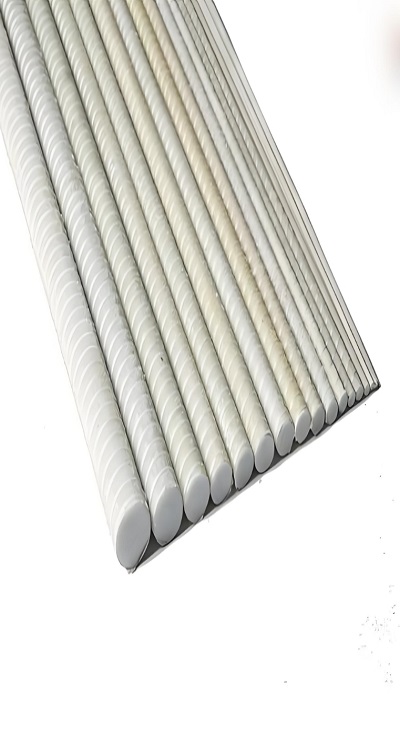
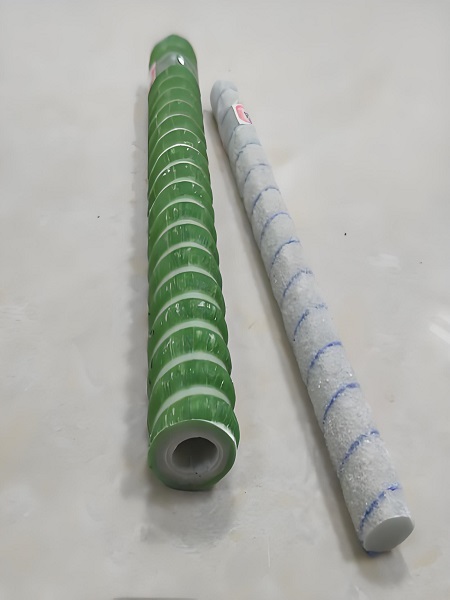
Fiberglass Rebar vs. Steel
Comparison Overview
Traditional steel rebar has long been a staple in construction due to its strength and reliability. However, it comes with several drawbacks, including significant issues with corrosion. Steel rebar often suffers from rust, especially in environments exposed to moisture or chemicals, leading to potential structural damage and costly maintenance. Additionally, steel rebar is relatively heavy, making handling and installation more challenging and expensive.
In contrast, Fiberglass Rebar offers a modern solution to these problems. Understanding what is fiberglass rebar made of helps explain its exceptional corrosion resistance.Made from fiberglass-reinforced polymers, Fiberglass Rebar boasts exceptional corrosion resistance. It remains unaffected by environmental factors that typically cause rust and degradation in steel. Furthermore, Fiberglass Rebar is lightweight compared to steel, which simplifies transportation and installation. Its durability extends the lifespan of reinforced structures, making it a favorable choice for various applications.
No Rust or Corrosion: One of the most significant benefits of Fiberglass Rebar is its immunity to rust and corrosion. This property makes it particularly suitable for use in harsh environments, such as marine or chemical-exposed areas, where traditional steel rebar would deteriorate over time. Lower Weight and Ease of Handling: Fiberglass Rebar is approximately 80% lighter than steel rebar, reducing the effort required for handling and installation. This weight advantage also lowers transportation costs, as fewer shipments are needed for the same volume of material. Long-Term Cost Savings on Maintenance: The corrosion resistance of Fiberglass Rebar translates to lower maintenance and repair costs over the lifespan of a structure. Unlike steel, which may require regular inspections and treatments to prevent rust, Fiberglass Rebar’s durability ensures minimal upkeep, leading to significant cost savings in the long run. Higher Initial Cost Compared to Steel: Although Fiberglass Rebar offers long-term benefits, its initial cost is typically higher than that of steel rebar. This higher upfront investment can be a consideration for budget-conscious projects. Lower Stiffness and Brittleness Concerns: Fiberglass Rebar has a lower stiffness compared to steel, which may impact its performance in applications requiring high rigidity, such as beams and columns. Additionally, Fiberglass Rebar tends to be more brittle, which can result in sudden fractures under certain conditions. Inferior Fire Resistance: Unlike steel, which can withstand high temperatures, Fiberglass Rebar has lower fire resistance. In scenarios where fire resistance is crucial, such as in high-rise buildings or critical infrastructure, this limitation needs to be carefully considered.Advantages of Fiberglass Rebar
Limitations of Fiberglass Rebar
GFRP Fiberglass Rebar
GFRP Fiberglass Rebar (Glass Fiber Reinforced Polymer Rebar) is a type of reinforcement bar used in concrete structures, composed of glass fibers embedded in a polymer resin matrix. It is a non-metallic alternative to traditional steel rebar, and is valued for its exceptional properties such as corrosion resistance, light weight, and high tensile strength.
Here’s an overview of GFRP Fiberglass Rebar, its composition, benefits, and typical applications:
Composition of GFRP Fiberglass Rebar
GFRP rebar is made from:
- Glass Fibers: These are continuous strands of glass that provide the rebar with its strength. The glass fibers are arranged in a longitudinal direction to provide maximum tensile strength.
- Polymer Resin Matrix: The glass fibers are coated with a polymer resin, typically epoxy, vinyl ester, or polyester. The resin binds the fibers together and gives the rebar its form and durability.
- Surface Treatment: Some types of GFRP rebar have a roughened surface (such as sand coating or ribs) to improve the bond between the rebar and the surrounding concrete. The bond strength is essential for effective load transfer.
Mechanical Properties of GFRP Rebar
As mentioned previously, GFRP rebar possesses the following key mechanical properties:
Tensile Strength: GFRP rebar has a tensile strength typically between 1,000 MPa to 2,500 MPa, which is higher than that of steel rebar (typically around 400 MPa to 600 MPa). This makes it ideal for use in structures that require high strength-to-weight ratios.
Modulus of Elasticity: The modulus of elasticity for GFRP is much lower than that of steel, typically in the range of 40 GPa to 50 GPa, meaning it is more flexible and will experience greater deflection under load than steel.
Corrosion Resistance: One of the major advantages of GFRP rebar is its complete resistance to corrosion. Unlike steel rebar, which rusts when exposed to moisture and salt, GFRP rebar does not corrode, even in harsh environments such as marine applications, wastewater treatment plants, and structures exposed to de-icing salts.
Shear Strength: The shear strength of GFRP rebar is generally lower than that of steel rebar, typically around 50 MPa to 100 MPa. For this reason, it is often combined with other reinforcement methods in shear-critical applications.
Bond Strength: GFRP rebar typically has a lower bond strength to concrete compared to steel rebar, but this can be improved with surface treatments (such as ribbing or sand coating) to increase mechanical bonding with the surrounding concrete.
Density: GFRP rebar is significantly lighter than steel, with a density around 2.4 to 2.5 g/cm³, which makes it easier to handle and transport.
Impact Resistance: GFRP rebar generally offers moderate impact resistance compared to steel, but its resistance to cracking or breaking under impact is generally better than concrete, due to its flexibility and lack of corrosion.
Thermal Expansion: GFRP rebar has a low coefficient of thermal expansion (around 5-7 × 10⁻⁶/°C), which means it expands and contracts less with temperature changes compared to steel.
Benefits of GFRP Fiberglass Rebar
GFRP rebar offers several key advantages over traditional steel rebar, making it suitable for specific construction applications:
Corrosion Resistance: The biggest advantage of GFRP rebar is its resistance to corrosion. This makes it an ideal choice for structures exposed to harsh environments, such as coastal areas (saltwater), highways (de-icing salts), or chemical plants (acidic or alkaline conditions).
Lightweight: GFRP rebar is about 70-80% lighter than steel rebar, which makes it easier to transport, handle, and install. This reduces labor costs and simplifies logistics.
Longer Service Life: Due to its corrosion resistance, GFRP rebar significantly extends the lifespan of reinforced concrete structures, reducing the need for repairs and maintenance over time.
Higher Strength-to-Weight Ratio: Despite its light weight, GFRP rebar offers high tensile strength and can handle significant load-bearing requirements, making it a good alternative for heavy-duty applications.
Non-Conductive: GFRP rebar is non-metallic, making it ideal for applications where electrical conductivity is a concern (e.g., near electrical equipment or in electrical grounding systems).
Sustainability: The production of GFRP rebar generally has a lower carbon footprint compared to steel production, and it is recyclable, contributing to more sustainable construction practices.
No Risk of Rust Staining: Since GFRP rebar does not rust, there is no risk of rust stains affecting the appearance of concrete, which is a major concern with steel rebar.
Applications of GFRP Fiberglass Rebar
GFRP rebar is used in various concrete structures, particularly in situations where corrosion resistance and durability are critical. Some common applications include:
Bridge Construction: In bridges, especially those in areas with high levels of salt exposure or moisture, GFRP rebar helps increase the structure’s lifespan and reduces maintenance needs.
Marine Structures: GFRP rebar is ideal for harbor structures, piers, docks, and seawalls due to its high resistance to corrosion from seawater.
Pavements and Roads: In areas that use de-icing salts in winter, GFRP rebar is used in concrete pavements and roadways to prevent corrosion and extend the life of the road infrastructure.
Wastewater Treatment Plants: GFRP rebar is resistant to chemicals found in sewage and wastewater, making it suitable for reinforcing concrete in treatment plants and pipelines.
Foundations and Slabs: GFRP rebar is used in foundations and slabs, especially in areas where corrosion could be a problem, such as in regions with high water tables or high humidity.
Underground and Elevated Structures: In underground or elevated structures, where exposure to moisture is common, GFRP rebar prevents the long-term degradation of the concrete caused by corrosion.
Chemical Plants: In industrial environments where aggressive chemicals (acids, alkalis) are present, GFRP rebar can be used to reinforce concrete exposed to harsh conditions.
Parking Structures: GFRP rebar is also used in parking garages, where the concrete is exposed to vehicle-induced wear and the risk of salt corrosion from de-icing is high.
Limitations of GFRP Fiberglass Rebar
While GFRP rebar has numerous advantages, it also has some limitations compared to traditional steel rebar:
Lower Modulus of Elasticity: GFRP rebar is more flexible than steel and exhibits more deflection under load. This needs to be carefully considered in design, especially for structures that are sensitive to deflections.
Lower Shear Strength: GFRP rebar has lower shear strength compared to steel rebar, which might require additional reinforcement or alternative design solutions in certain applications.
Cost: The initial cost of GFRP rebar is typically higher than steel, which can make it a more expensive choice for some projects. However, this higher initial cost can be offset over the long term due to reduced maintenance and longer service life.
Brittleness: GFRP rebar has a lower elongation (brittle behavior) compared to steel, meaning it does not deform as much before failure. This is important to consider in designs where ductility is a key factor.
Standards for GFRP Fiberglass Rebar
GFRP rebar is regulated by several standards to ensure its quality and performance in concrete reinforcement:
- ASTM D7957 – Standard specification for GFRP bars for concrete reinforcement.
- ACI 440.4R – Guide for the design and construction of structural concrete reinforced with GFRP bars.
- CSA S806 – Canadian standard for the design of structures with fiber-reinforced polymers.
These standards provide guidance on the mechanical properties, testing methods, and design requirements for the use of GFRP rebar in concrete structures.
GFRP Fiberglass Rebar is an advanced reinforcement material that offers exceptional durability, corrosion resistance, and high strength while being significantly lighter than traditional steel rebar. It is an ideal solution for structures exposed to harsh environmental conditions, such as coastal areas, chemical plants, and infrastructure subject to de-icing salts. Though its initial cost may be higher, the long-term savings due to reduced maintenance and longer lifespan make GFRP rebar a highly cost-effective option for many construction projects.
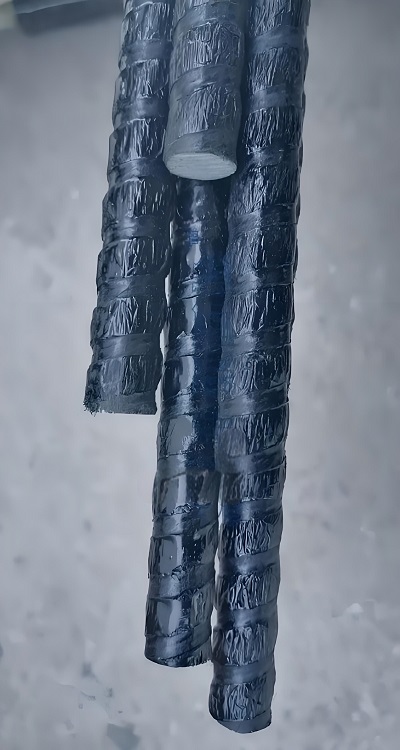
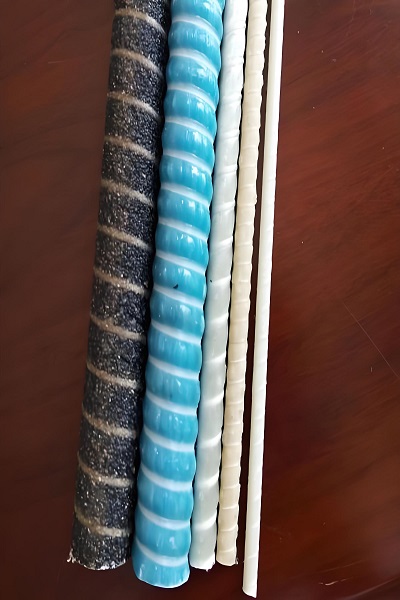
Fiberglass Rebar Price
When evaluating the Fiberglass Rebar price, it’s essential to understand how it compares to traditional steel rebar. On average, Fiberglass Rebar tends to be more expensive than steel rebar. This higher initial cost can be attributed to the advanced materials and manufacturing processes involved in producing Fiberglass Rebar. Despite this, it is important to consider the long-term cost implications.
Steel rebar is generally less expensive upfront, but it has associated costs such as maintenance and repair due to its susceptibility to corrosion. Over time, these maintenance costs can add up, making steel rebar more expensive in the long run. In contrast, while Fiberglass Rebar may require a higher initial investment, its superior durability and resistance to environmental factors can lead to lower overall maintenance costs, potentially offsetting the higher purchase price.
The price of GangLong Fiberglass Custom Fiberglass Rebar is influenced by a variety of factors, but we remains a highly cost-effective solution in the long term, especially when considering its durability, performance, and reduced maintenance costs compared to traditional steel rebar. Below, we outline the key factors that determine the price of custom fiberglass rebar from GangLong, as well as the benefits of choosing this material despite its upfront cost. Customization and Specifications: Quantity of Order: Project Complexity: Shipping and Logistics: Though fiberglass rebar may have a higher initial price point compared to steel rebar, it offers substantial cost savings over time due to: While the price of GangLong fiberglass custom rebar may vary based on the order’s complexity, customization, and quantity, we provides a clear long-term advantage for projects that demand high durability, corrosion resistance, and reduced maintenance costs. Choosing fiberglass rebar over traditional materials like steel can result in significant overall savings, making us an investment that pays off over the lifespan of the structure. GangLong offers competitive pricing while ensuring top-quality production, making us an ideal choice for industries requiring reliable, cost-effective reinforcement solutions in challenging environments.Custom Fiberglass Rebar Price
Factors Influencing the Price of GangLong Fiberglass Custom Fiberglass Rebar
Cost-Effectiveness in the Long Term
Why Choose GangLong Fiberglass Custom Fiberglass Rebar
Thank you for your interest in our products. To receive our pricelist or for any inquiries, please fill out the form below. We will get back to you within 24 hours.
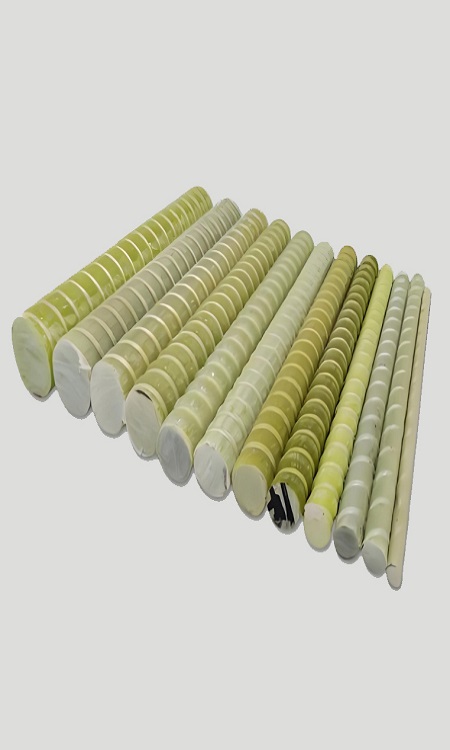
Fiberglass Rebar Sizes
Fiberglass Rebar is a modern construction material made from reinforced plastic fibers that provide an alternative to traditional steel rebar. Its unique properties, such as high strength-to-weight ratio and corrosion resistance, make it an attractive choice for various construction projects. Understanding the different sizes of Fiberglass Rebar and their applications is crucial for optimizing its use in construction.
Common Sizes and Their Uses
Fiberglass Rebar is available in a range of sizes to meet different construction needs. The sizes generally vary in diameter and length, which can be tailored to specific project requirements. Here is an overview of some common sizes and their typical applications:
Small Diameters (e.g., 6 mm, 8 mm)
Overview: Smaller diameters are often used for lighter load-bearing applications and in situations where space is constrained.
Uses: These sizes are ideal for reinforcement in residential construction, decorative concrete elements, and smaller precast concrete components. They are also suitable for applications where high corrosion resistance is required, such as in coastal or industrial environments.
Overview: Medium diameters offer a balance between strength and flexibility, making them versatile for a variety of structural applications. Overview: Larger diameters provide increased load-bearing capacity and are used in high-stress applications. Fiberglass Rebar 20′ is a versatile option for various construction projects, known for its length and utility. This specific length of Fiberglass Rebar is often utilized in applications that require extended reinforcement spans, such as in large concrete slabs or structural components. The 20-foot length provides significant coverage and reduces the need for frequent splicing or jointing, which can streamline the construction process and enhance the structural integrity of the project. Fiberglass Rebar 20′ is particularly useful in applications where longer, uninterrupted reinforcement is needed. For instance, it is ideal for use in foundations, bridge decks, and large industrial floors where minimizing joints can improve overall strength and stability. Its corrosion resistance makes it suitable for environments exposed to moisture, chemicals, or other corrosive agents, where traditional steel rebar might deteriorate quickly.Medium Diameters (e.g., 10 mm, 12 mm)
Uses: These sizes are commonly used in medium-load structures like driveways, sidewalks, and residential slabs. They are also employed in some commercial and industrial projects where moderate strength and resistance to environmental factors are needed.Large Diameters (e.g., 16 mm, 20 mm)
Uses: Large-diameter Fiberglass Rebar is ideal for heavy-duty structures such as bridge decks, industrial floors, and large-scale foundations. These sizes are selected for their ability to handle significant structural loads and their superior performance in harsh conditions.Fiberglass Rebar 20′
Availability and Specifications
Disadvantages of Fiberglass Rebar
While Fiberglass Rebar offers several benefits, such as corrosion resistance and lightweight handling, it is important to also consider its disadvantages. Understanding these challenges and limitations can help in making informed decisions about when and where to use Fiberglass Rebar.
Challenges and Limitations
Higher Costs and Economic Implications
Cost Comparison: Fiberglass Rebar is generally more expensive than traditional steel rebar. The higher production costs associated with the specialized materials and manufacturing processes contribute to its elevated price. This can impact the overall budget for construction projects, especially on a large scale.
Economic Considerations: While the initial cost of Fiberglass Rebar is higher, its durability and rust resistance may lead to lower maintenance costs over time. However, the upfront investment can be a significant consideration for budget-conscious projects or smaller-scale applications where cost savings are a priority.
Stiffness and Brittleness: Fiberglass Rebar tends to be more brittle compared to traditional steel rebar. This can lead to challenges during installation, as it may be more prone to cracking or breaking under certain conditions. Additionally, its lower stiffness compared to steel might affect its performance in applications requiring high rigidity. Durability Concerns: Although Fiberglass Rebar is highly resistant to corrosion, its long-term performance can be affected by factors such as exposure to UV light and chemical interactions. Over time, these factors may impact its effectiveness and longevity.Issues Related to Stiffness, Brittleness, and Fire Resistance
Fire Resistance: Fiberglass Rebar generally has lower fire resistance compared to steel rebar. In high-temperature scenarios, such as fires, the resin used in Fiberglass Rebar can degrade, potentially compromising the structural integrity of the concrete. This limitation makes it less suitable for applications where fire resistance is a critical factor.Long-Term Performance Considerations
Structural Behavior: The long-term structural behavior of Fiberglass Rebar in various environmental conditions is still under study. Unlike traditional steel rebar, which has a well-documented performance history, Fiberglass Rebar’s long-term performance data is less comprehensive. This can lead to uncertainties regarding its behavior in specific applications or environments.
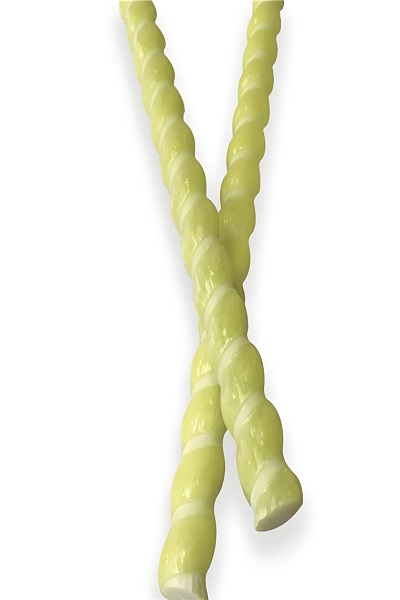
FAQs about Fiberglass Rebar
What is the lifespan of fiberglass rebar?
Is fiberglass rebar stronger than steel?
Does fiberglass rebar meet code?
Do you have to bond fiberglass rebar?
Where can you use fiberglass rebar?
Is fiberglass rebar any good?
Is fiberglass rebar easy to cut?
Can fiberglass rebar bend?
Does fiberglass rebar rust?
What is the strongest rebar?
Does fiberglass rebar float?
Is fiberglass stronger than steel?
What is the lifespan of GFRP rebar?
Can fiberglass rebar be used in columns?
What are the problems with fiberglass rebar?
Brittleness: Unlike steel, fiberglass rebar is brittle and cannot be bent on-site. This limits its flexibility in construction projects where custom shaping is required.
Lower Compressive Strength: Fiberglass rebar has lower compressive strength compared to steel, which may limit its use in certain load-bearing applications.
Initial Cost: GFRP rebar is often more expensive upfront than traditional steel rebar, although it can be more cost-effective over time in corrosive environments due to its longer lifespan.
Limited Ductility: Fiberglass rebar does not deform plastically under load, which means it can fail suddenly without the warning signs that steel rebar might show, such as bending or yielding.
Specialized Installation: Requires specific knowledge and tools for installation, particularly since it cannot be bent or welded like steel.
Why is fiberglass not good?
Brittleness: It is more prone to cracking or breaking under impact compared to materials like steel.
Temperature Sensitivity: Fiberglass can weaken at high temperatures, which may limit its use in environments with extreme heat.
Incompatibility with On-Site Bending: Fiberglass rebar cannot be bent on-site, requiring precise pre-fabrication or the use of steel in applications that need on-site adjustments.
Higher Initial Cost: The cost of fiberglass materials can be higher than traditional options like steel, which may not be justified in non-corrosive environments.
Can you use fiberglass rebar in a driveway?
Is fiberglass rebar worth it?
Is fiberglass better than rebar in concrete?
When to use fiberglass rebar?
Corrosion Resistance is Crucial: Such as in marine environments, chemical plants, or bridges exposed to de-icing salts.
Lightweight Requirements: In applications where reducing weight is beneficial, such as in certain prefabricated structures or in areas where transportation costs are a concern.
Non-Magnetic Properties: In facilities where magnetic interference must be minimized, such as in MRI rooms or research laboratories.
Electrical Insulation is Needed: In situations where the non-conductive nature of fiberglass rebar is an advantage.
Is GFRP rebar cheaper than steel rebar?
Is fiberglass rebar cheaper than steel?
What is pink fiberglass rebar used for?
Concrete reinforcement in corrosive environments: Such as in bridges, marine structures, and coastal infrastructure.
Driveways and sidewalks: Where exposure to de-icing salts could cause traditional steel rebar to corrode.
Parking structures and garages: To prevent corrosion from road salt.
Retaining walls and foundations: In areas with high moisture content or chemical exposure.
Is fiberglass in concrete as good as rebar?
What is the purpose of fiberglass rebar?
Does fiberglass last longer than steel?
When can you use fiberglass rebar?
Marine environments: For docks, piers, and other structures exposed to saltwater.
Bridges and highways: Especially in areas that use de-icing salts, which can corrode steel rebar.
Chemical plants: Where exposure to corrosive chemicals could degrade steel.
Parking garages: To prevent corrosion from road salt.
Tunnels and retaining walls: Where long-term durability and corrosion resistance are required.
MRI rooms and research facilities: Where non-magnetic and non-conductive properties are essential.
What do you tie fiberglass rebar with?
What cuts fiberglass rebar?
Diamond-bladed saws: Circular saws with diamond blades provide clean cuts without damaging the material.
Carbide-tipped hacksaws: For smaller diameters, a carbide-tipped hacksaw can be used effectively.
Bolt cutters: For quick cuts, though they may not produce as clean an edge as a saw.
Why is epoxy coated rebar being banned?
Can fiberglass rebar be used in footings?
Will fiberglass rebar bend?
Can you use fiberglass rebar vertically?
Can you use fiber instead of rebar in concrete?
What are the downsides of fiberglass rebar?
Brittleness: Fiberglass rebar cannot be bent or reshaped on-site, limiting its versatility.
Lower compressive strength: It is not as strong as steel in terms of compressive load-bearing capacity.
Higher initial cost: Fiberglass rebar can be more expensive upfront compared to steel rebar.
Specialized installation: Requires specific tools and knowledge for proper installation.
Lack of ductility: Fiberglass rebar does not deform plastically under load, meaning it can fail suddenly without warning.
Can you use fiberglass to reinforce concrete?
Is fiberglass rebar as good as steel rebar?
Is fiberglass rebar cheaper?
Thank you for your interest in our products. To receive our pricelist or for any inquiries, please fill out the form below. We will get back to you within 24 hours.
